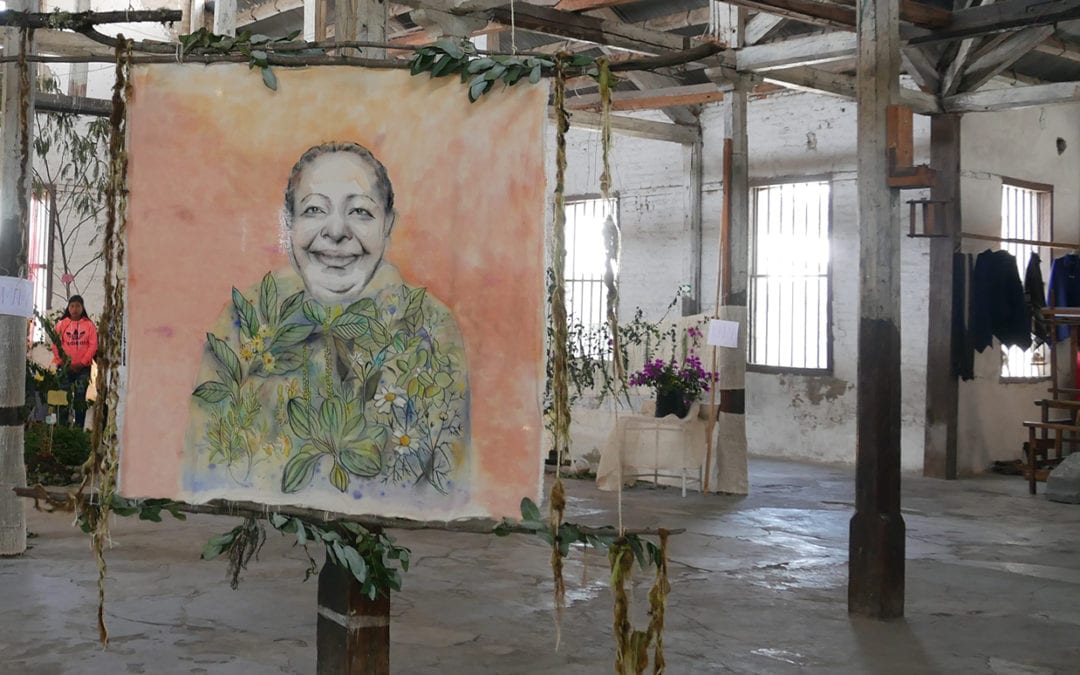Beatrice Glow’s project was inspired by “Doña Mary,” an Afro-Ecuadorian grandmother who worked as a chef at the program’s host partner organization. She noticed that the feminine labor of Doña Mary, the woman who took care of their wellbeing, was often invisibilized. To Glow, Mary represented not only the strength of pachamama (Mother Earth), but also the core lessons of resilience and survivorship that initially drew her to work within the context of Casa de Artes Yarina and Museo Viviente Otavalango’s past as the Antigua Fábrica San Pedro, a site of indigenous exploitation between the 1850s through 1970s. In local marketplaces, Glow noticed that cornsilk, a potent herb to heal urinary tract and kidney infections, was tossed as trash. Thus, her counterpart Ana Cachimuel and Mary helped procure cornsilk from market vendors as Glow braided them to frame a drawing of Mary adorned in medicinal plants she uses to heal people. The drawing was then activated with a video interview paired as an augmented reality feature.

